#atomic research
Explore tagged Tumblr posts
Text
Both showed equal modesty and bewilderment before the impenetrable.
"Brighter than a Thousand Suns: A Personal History of the Atomic Scientists" - Robert Jungk, translated by James Cleugh
#book quote#brighter than a thousand suns#robert jungk#james cleugh#nonfiction#university#teachers#students#modesty#bewilderment#impenetrable#breaking new ground#atomic research
2 notes
·
View notes
Text
The Rand Corporation, which acts under the orders of the United States Air Force and, among other activities, issues reports on technical progress in the Soviet Union, published in 1956 a study with the following statement:
But the Russians apparently dismissed the idea that it [the bomb] would be feasible for the war then raging. They made no attempt to conceal the fact that they had stopped atomic research; and they apparently did not assign priority to the subject of atomic energy in their foreign espionage. ... By 1943 the Russians had resumed an atomic development programme with the apparent intent of trying to acquire nuclear weapons.
"Brighter than a Thousand Suns: A Personal History of the Atomic Scientists" - Robert Jungk, translated by James Cleugh
#book quotes#brighter than a thousand suns#robert jungk#james cleugh#nonfiction#rand corporation#united states#air force#reports#progress update#soviet union#50s#1950s#russians#atom bomb#atomic research#priority#atomic energy#espionage#40s#1940s#nuclear weapons
0 notes
Text

Ever wondered how science was introduced to the public through media? Check out this 1948 comic book produced for General Electric! It offered readers a glimpse into atomic energy.
#American Archives Month#Ask An Archivist#Atomic Energy#Comic Book#Research#History#National Archives#Archives
114 notes
·
View notes
Text
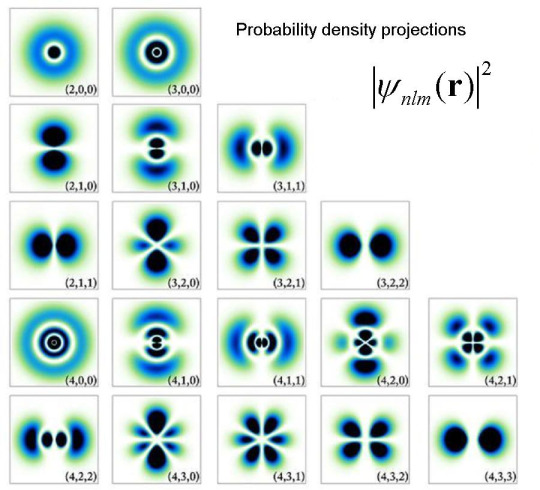
Zoom In Atom Or Unknown Physics Of Short Distances
Previous work of Vladimir Kalitvianski, showing how that the nucleus within an atom doesn't remain stationary but instead moves around the atomic center of inertia, creating what he describes as "positive charge clouds." These clouds are analogous to the more familiar negative electron clouds but exist much closer to the nucleus. This finding challenges the traditional view of atomic structure, showing that the nucleus is quantum-mechanically smeared, depending on the electron's configuration.
Kalitvianski's work highlights that the nucleus is not a point-like object but has a smeared distribution influenced by the electron orbits. The larger the electron orbit, the larger the positive charge cloud, which is counterintuitive. This smeared charge distribution impacts how we understand elastic scattering processes at short distances, where the nucleus behaves differently than previously thought. The form factors derived in his research describe these positive charge distributions and their implications for elastic and inelastic scattering processes.
The implications of this research are profound for both atomic physics and quantum electrodynamics (QED). It suggests that traditional models, which treat the nucleus as a point charge, need to be revised to account for this smearing effect.
57 notes
·
View notes
Text

#IFTTT#Flickr#industry#illustration#vintage#magazine#ads#advertising#suburban#ad#suburbia#science#retro#nostalgia#research#1940s#chemistry#1950s#electricity#americana#1956#1960s#atomic#populuxe#housewife#scientist#nuclearpower#coldwar#popularscience#popularmechanics
39 notes
·
View notes
Text

Jumbo test cylinder for the Trinity atomic bomb test, Los Alamos
30 notes
·
View notes
Text
saw atomic habits on a friend's shelf and was fighting not to make a face <3
#nothing against self-help books but one thing ab me is i am getting most of my advice from MDs i admire#and wonderful professors whom i adore w all my heart <3#atomic habits is just a book i refuse to touch after it got verified that most of the research in it was bs#p
41 notes
·
View notes
Text
me sleep
8 notes
·
View notes
Text
I have just written an essay about nuclear weapons and it turned out so great yet so simple that I feel proud of myself. I have to write another essay for my Chemistry class, however the topic is my choice.
Do you guys have any topic suggestions?
#studying#student life#studyblr#my stuff#science#high school#school#hs#chemistry#research#physics#nuclear#atomic bomb#pls help#please help#help#suggestion#my post#original post#study blog#study aesthetic#student#study motivation
16 notes
·
View notes
Text
A good structure is something you can trust.
It relieves you from the burden of remembering and keeping track of everything. If you can trust the system, you can let go of the attempt to hold everything together in your head and you can start focusing on what is important: The content, the argument and the ideas. By breaking down the amorphous task of “writing a paper” into small and clearly separated tasks, you can focus on one thing at a time, complete each in one go and move on to the next one . A good structure enables flow, the state in which you get so completely immersed in your work that you lose track of time and can just keep on going as the work becomes effortless (Csikszentmihalyi, 1975). Something like that does not happen by chance.
- How to Take Smart Notes (Sönke Ahrens)
#Zettelkasten#Smart Notes#Slip-box#Niklas Luhmann#Knowledge Management#Active Recall#Linking Notes#Productivity#Creativity#Learning Strategies#Writing Papers#Academic Writing#Idea Development#Research Organization#Argument Structure#Evidence Collection#Drafting#Revision Techniques#Thesis Statement#Writing Process#Topic Exploration#Note-Taking Techniques#Atomic Notes#Contextual Notes#Evergreen Notes#Permanent Notes#Fleeting Notes#Literature Notes#Note Connection#Note Hierarchy
4 notes
·
View notes
Text

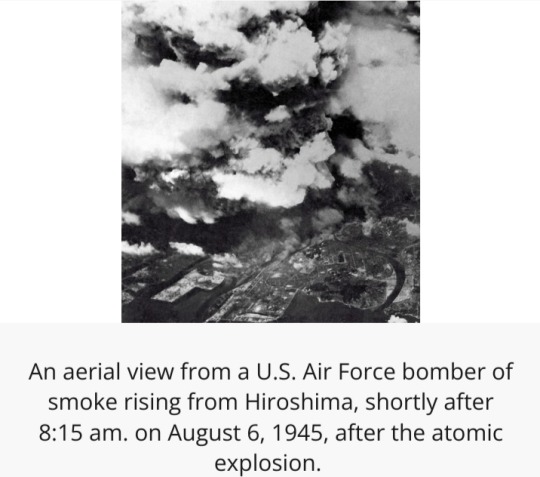
On 6 August 1945, during World War II (1939-45), an American B-29 bomber dropped the world’s first deployed atomic bomb over the Japanese city of Hiroshima.
The explosion immediately killed an estimated 80,000 people; tens of thousands more would later die of radiation exposure.
Three days later, a second B-29 dropped another A-bomb on Nagasaki, killing an estimated 40,000 people.
Japan’s Emperor Hirohito announced his country’s unconditional surrender in World War II in a radio address on August 15, citing the devastating power of “a new and most cruel bomb.”
The Manhattan Project
Even before the outbreak of war in 1939, a group of American scientists — many of them refugees from fascist regimes in Europe — became concerned with nuclear weapons research being conducted in Nazi Germany.
In 1940, the U.S. government began funding its own atomic weapons development program, which came under the joint responsibility of the Office of Scientific Research and Development and the War Department after the U.S. entry into World War II.
The U.S. Army Corps of Engineers was tasked with spearheading the construction of the vast facilities necessary for the top-secret program, codenamed “The Manhattan Project” (for the engineering corps’ Manhattan district).
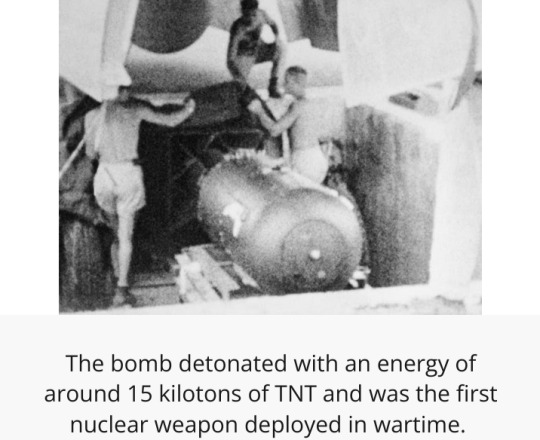
Over the next several years, the program’s scientists worked on producing the key materials for nuclear fission — uranium-235 and plutonium (Pu-239).
They sent them to Los Alamos, New Mexico, where a team led by J. Robert Oppenheimer worked to turn these materials into a workable atomic bomb.
Early on the morning of 16 July 1945, the Manhattan Project held its first successful test of an atomic device — a plutonium bomb — at the Trinity test site at Alamogordo, New Mexico.
No Surrender for the Japanese
By the time of the Trinity test, the Allied powers had already defeated Germany in Europe.
Japan, however, vowed to fight to the bitter end in the Pacific, despite clear indications (as early as 1944) that they had little chance of winning.
In fact, between mid-April 1945 (when President Harry Truman took office) and mid-July, Japanese forces inflicted Allied casualties totaling nearly half those suffered in three full years of war in the Pacific, proving that Japan had become even more deadly when faced with defeat.
In late July, Japan’s militarist government rejected the Allied demand for surrender put forth in the Potsdam Declaration, which threatened the Japanese with “prompt and utter destruction” if they refused.
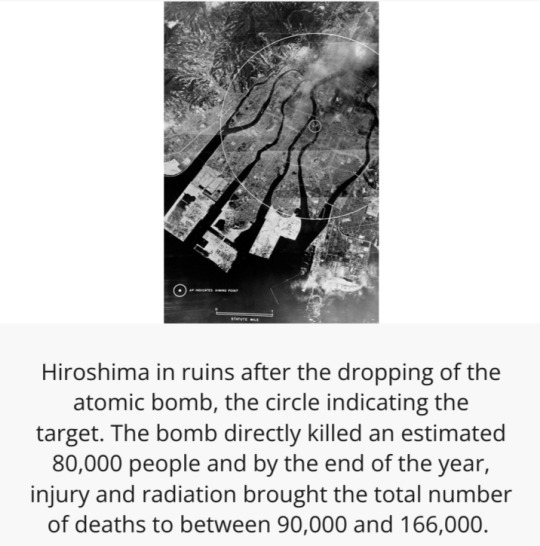
General Douglas MacArthur and other top military commanders favored continuing the conventional bombing of Japan already in effect and following up with a massive invasion, codenamed “Operation Downfall.”
They advised Truman that such an invasion would result in U.S. casualties of up to 1 million.
In order to avoid such a high casualty rate, Truman decided – over the moral reservations of Secretary of War Henry Stimson, General Dwight Eisenhower and a number of the Manhattan Project scientists – to use the atomic bomb in the hopes of bringing the war to a quick end.
Proponents of the A-bomb — such as James Byrnes, Truman’s secretary of state — believed that its devastating power would not only end the war but also put the U.S. in a dominant position to determine the course of the postwar world.
'Little Boy' and 'Fat Man' Are Dropped
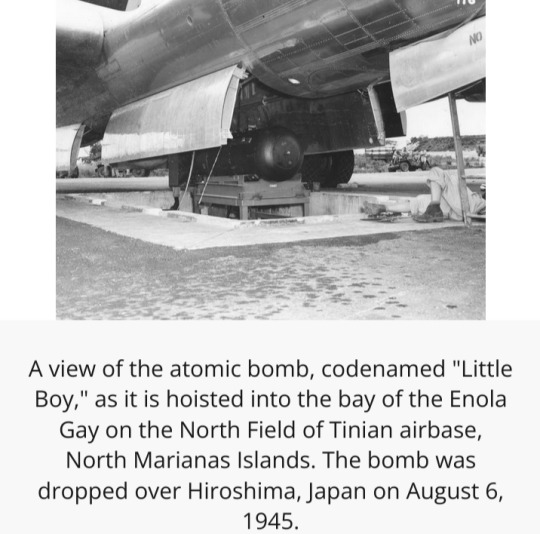
Hiroshima, a manufacturing center of some 350,000 people located about 500 miles from Tokyo, was selected as the first target.
After arriving at the U.S. base on the Pacific island of Tinian, the more than 9,000-pound uranium-235 bomb was loaded aboard a modified B-29 bomber christened Enola Gay (after the mother of its pilot, Colonel Paul Tibbets).
The plane dropped the bomb — known as “Little Boy” — by parachute at 8:15 in the morning.
It exploded 2,000 feet above Hiroshima in a blast equal to 12-15,000 tons of TNT, destroying five square miles of the city.
Hiroshima’s devastation failed to elicit immediate Japanese surrender, however, and on August 9, Major Charles Sweeney flew another B-29 bomber, Bockscar, from Tinian.
Thick clouds over the primary target, the city of Kokura, drove Sweeney to a secondary target, Nagasaki, where the plutonium bomb “Fat Man” was dropped at 11:02 that morning.
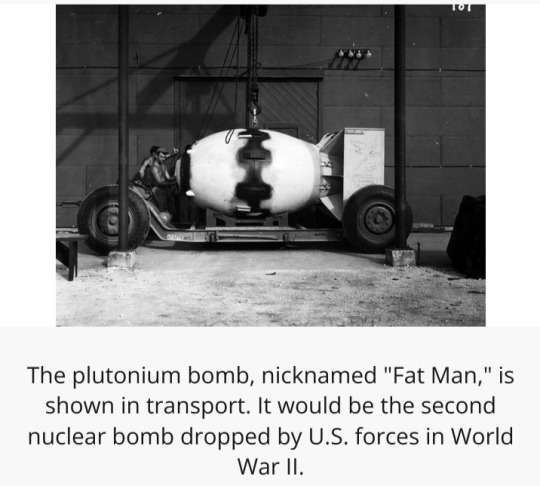
More powerful than the one used at Hiroshima, the bomb weighed nearly 10,000 pounds and was built to produce a 22-kiloton blast.
The topography of Nagasaki, which was nestled in narrow valleys between mountains, reduced the bomb’s effect, limiting the destruction to 2.6 square miles.
Aftermath of the Bombing

At noon on 15 August 1945 (Japanese time), Emperor Hirohito announced his country’s surrender in a radio broadcast.
The news spread quickly.
“Victory in Japan” or “V-J Day” celebrations broke out across the United States and other Allied nations.
The formal surrender agreement was signed on September 2, aboard the U.S. battleship Missouri, anchored in Tokyo Bay.
Because of the extent of the devastation and chaos — including the fact that much of the two cities' infrastructure was wiped out — exact death tolls from the bombing of Hiroshima and Nagasaki remain unknown.
However, it's estimated roughly 70,000 to 135,000 people died in Hiroshima and 60,000 to 80,000 people died in Nagasaki, both from acute exposure to the blasts and from long-term side effects of radiation.


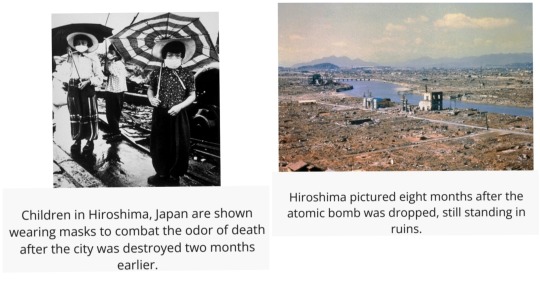
#Bombing of Hiroshima and Nagasaki (1945)#6 August 1945#atomic bomb#Hiroshima#Nagasaki#B-29 bomber#A-bomb#U.S. Army Corps of Engineers#The Manhattan Project#nuclear weapons research#Office of Scientific Research and Development#War Department#World War II#WWII#uranium-235#plutonium (Pu-239)#nuclear fission#plutonium bomb#J. Robert Oppenheimer#Oppenheimer#Trinity test#Potsdam Declaration#General Douglas MacArthur#Operation Downfall#Henry Stimson#General Dwight Eisenhower#Enola Gay#Colonel Paul Tibbets#Bockscar#V-J Day
37 notes
·
View notes
Text
The possibility had to be taken into account that preliminary experiments might lead to a premature explosion which would release dangerous radioactivity and imperil the civil population.
"Brighter than a Thousand Suns: A Personal History of the Atomic Scientists" - Robert Jungk, translated by James Cleugh
#book quote#brighter than a thousand suns#robert jungk#james cleugh#nonfiction#town planning#experiments#atomic research#explosion#radiation#radioactivity
0 notes
Text
Some ideas of the atmosphere which prevailed in the 'atom cities' may be obtained from the following story told to a scientific congress by Dr Swartout, Director of the Radiochemistry Department at the Oak Ridge atomic-research laboratory:
One evening in the summer of 1947 a scientist – and by the term 'a scientist' I indicate only a typical case – was aroused from his dinner by a knock on the door. At his door stood a uniformed guard, who demanded that the man turn over his badge, his means of access to the town in which he lived and the installation at which he worked. Because the guard could give no reason, the man called his supervisor for an explanation, who turned out to be completely unaware of what was going on. After calls to successfully higher authorities the man was told to comply with the guard's orders and to report to the installation director's office early the next morning. Confronted by officials on the next day he was told that the F.B.I. investigation had discussed information which forced the Commission to consider him to be a questionable security risk; that he would be permitted to submit a statement in his defence regarding his character, loyalty, and associations; and that he would be reviewed by an A.E.C. board in Washington. In the meantime he would get a temporary pass to admit him to his home but not his place of work.
Imagine yourself in his position. If you were asked to defend your character, loyalty, and associations, what would you do? Against what! Whom had he known, what had he done or said which would bring this accusation against him!
"Brighter than a Thousand Suns: A Personal History of the Atomic Scientists" - Robert Jungk, translated by James Cleugh
#book quotes#brighter than a thousand suns#robert jungk#james cleugh#nonfiction#atom cities#j a swartout#director#radiochemistry#oak ridge#atomic research#research laboratory#storytelling#atmosphere#40s#1940s#investigation#fbi#aec board#security risk#just following orders#personal defence
0 notes
Text
Atom: The Beginning & AI Cybersecurity
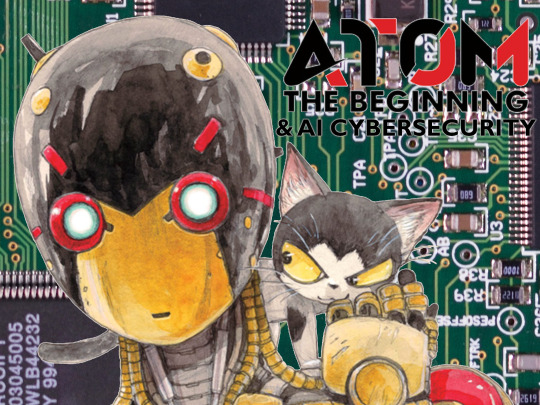
Atom: The Beginning is a manga about two researchers creating advanced robotic AI systems, such as unit A106. Their breakthrough is the Bewusstein (Translation: awareness) system, which aims to give robots a "heart", or a kind of empathy. In volume 2, A106, or Atom, manages to "beat" the highly advanced robot Mars in a fight using a highly abstracted machine language over WiFi to persuade it to stop.

This may be fiction, but it has parallels with current AI development in the use of specific commands to over-run safety guides. This has been demonstrated in GPT models, such as ChatGPT, where users are able to subvert models to get them to output "banned" information by "pretending" to be another AI system, or other means.
There are parallels to Atom, in a sense with users effectively "persuading" the system to empathise. In reality, this is the consequence of training Large Language Models (LLM's) on relatively un-sorted input data. Until recent guardrail placed by OpenAI there were no commands to "stop" the AI from pretending to be an AI from being a human who COULD perform these actions.
As one research paper put it:
"Such attacks can result in erroneous outputs, model-generated hate speech, and the exposure of users’ sensitive information." Branch, et al. 2022

There are, however, more deliberately malicious actions which AI developers can take to introduce backdoors.
In Atom, Volume 4, Atom faces off against Ivan - a Russian military robot. Ivan, however, has been programmed with data collected from the fight between Mars and Atom.
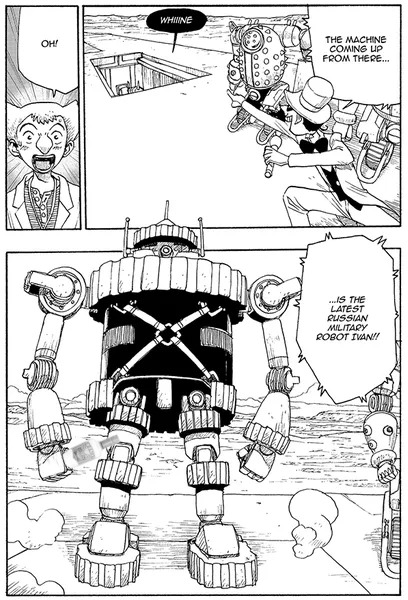
What the human researchers in the manga didn't realise, was the code transmissions were a kind of highly abstracted machine level conversation. Regardless, the "anti-viral" commands were implemented into Ivan and, as a result, Ivan parrots the words Atom used back to it, causing Atom to deliberately hold back.

In AI cybersecurity terms, this is effectively an AI-on-AI prompt injection attack. Attempting to use the words of the AI against itself to perform malicious acts. Not only can this occur, but AI creators can plant "backdoor commands" into AI systems on creation, where a specific set of inputs can activate functionality hidden to regular users.
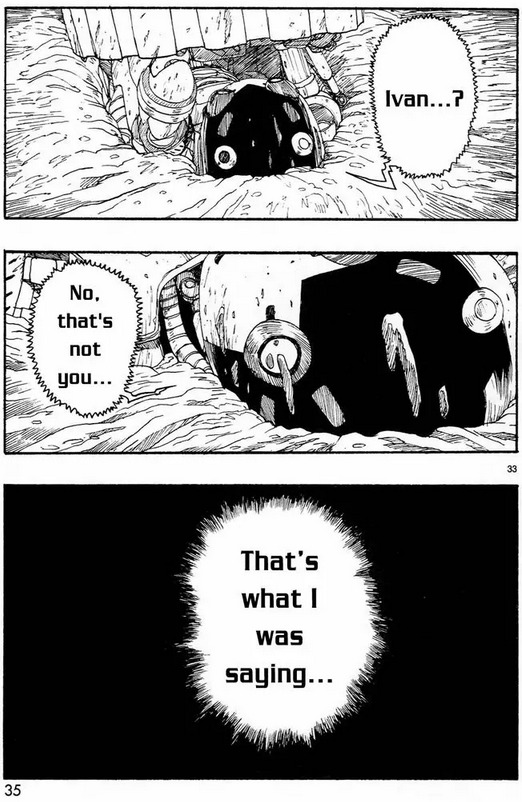
This is a key security issue for any company training AI systems, and has led many to reconsider outsourcing AI training of potential high-risk AI systems. Researchers, such as Shafi Goldwasser at UC Berkley are at the cutting edge of this research, doing work compared to the key encryption standards and algorithms research of the 1950s and 60s which have led to today's modern world of highly secure online transactions and messaging services.
From returning database entries, to controlling applied hardware, it is key that these dangers are fully understood on a deep mathematical, logical, basis or else we face the dangerous prospect of future AI systems which can be turned against users.
As AI further develops as a field, these kinds of attacks will need to be prevented, or mitigated against, to ensure the safety of systems that people interact with.
References:
Twitter pranksters derail GPT-3 bot with newly discovered “prompt injection” hack - Ars Technica (16/09/2023)
EVALUATING THE SUSCEPTIBILITY OF PRE-TRAINED LANGUAGE MODELS VIA HANDCRAFTED ADVERSARIAL EXAMPLES - Hezekiah Branch et. al, 2022 Funded by Preamble
In Neural Networks, Unbreakable Locks Can Hide Invisible Doors - Quanta Magazine (02/03/2023)
Planting Undetectable Backdoors in Machine Learning Models - Shafi Goldwasser et.al, UC Berkeley, 2022
#ai research#ai#artificial intelligence#atom the beginning#ozuka tezuka#cybersecurity#a106#atom: the beginning
18 notes
·
View notes
Text
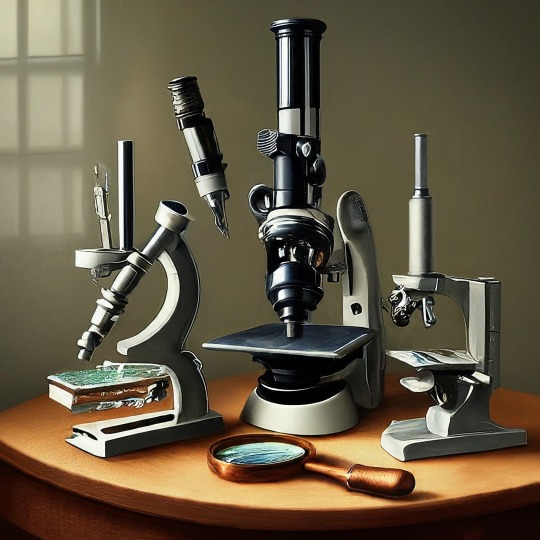
A Journey into the World of Microscopy: From Humble Beginnings to High-Tech Magnification
The science of looking into the hidden invisible Microscopy has transformed our understanding of the world around us. It can explore the universe beyond the reach of our naked eyes, with complex cellular structures, red blood cells, viruses and other viruses and microorganisms taking on amazing perspectives
The history of the microscope is a fascinating story of human curiosity, scientific genius, and relentless exploration. From the humble beginnings of simple magnifying glasses to the sophistication of modern electronic microscopes, the invention of microscopes has shaped our understanding of the microscopic world
In the 1600s, Dutch opticians such as Hans and Zachary Janssen are credited with inventing the first microscope. Known for this hybrid microscope, many lenses were used to magnify objects up to 30 times.At the end of the 17th century, Antony van Leeuwenhoek, Dutch draper some changed our perception of thumbnails. Armed with a well-made single-lens microscope, and explored the hidden reaches of nature. In 1674, Leeuwenhoek discovered microorganisms in lake water, which he aptly named “animalcules”. His discovery laid the foundations of biology and inspired generations of scientists. This incredible feat allowed him to uncover a hidden universe – the first sightings of bacteria, red blood cells, and other microorganisms.
Formation of the scientific environment (17th-19th centuries): Leeuwenhoek’s discoveries boosted scientific research. Robert Hooke, an English scientist, established these developments. In 1665, his book "Micrographia" recorded his observations with a compound microscope. Notably, the term "cell" was coined by Hooke when he examined cork tissue, laying the foundation for cell biology.Microscope systems flourished throughout the 18th and 19th centuries Joseph Lister and other scientists addressed the limitations of the early lenses, introducing improvements that reduced image distortion.
Beyond the Limits of Light: The Beginning of the New Age (19th-20th century): As the 19th century progressed, the limitations of optical microscopy became apparent and scientists yearned for a tool which can go deeper into cells. This research culminated in the development of the electron microscope in the 1930s. The 20th century was revolutionary with the invention of the electron microscope. Unlike light microscopes, which use visible light, electron microscopes use electron beams to achieve much higher magnification.Formation of the scientific environment (17th-19th centuries): Leeuwenhoek’s discoveries boosted scientific research. Robert Hooke, an English scientist, established these developments. In 1665, his book "Micrographia" recorded his observations with a compound microscope. Notably, the term "cell" was coined by Hooke when he examined cork tissue, laying the foundation for cell biology.Microscope systems flourished throughout the 18th and 19th centuries Joseph Lister and other scientists addressed the limitations of the early lenses, introducing improvements that reduced image distortion.
Beyond the Limits of Light: The Beginning of the New Age (19th-20th century): As the 19th century progressed, the limitations of optical microscopy became apparent and scientists yearned for a tool which can go deeper into cells. This research culminated in the development of the electron microscope in the 1930s. The 20th century was revolutionary with the invention of the electron microscope. Unlike light microscopes, which use visible light, electron microscopes use electron beams to achieve much higher magnification.
In the 1930s, German experts Max Knoll and Ernst Ruska made the first electron microscope. This tool let us see tiny things like cells and even atoms by using electron beams, not light, getting images many times bigger. This cool invention showed us the tiny parts inside cells, viruses, and stuff too small to see before. The 1900s brought even more cool microscopes. New kinds like phase-contrast and confocal microscopy let scientists look at live cells without using stuff that could hurt them. Now, the world of looking at tiny things is getting even better. Today, we have high-tech microscopes that use computers and lasers. These let us see and even change tiny things in ways we never could before.
Modern Microscopy's Diverse Arsenal - Today, the field of microscopy boasts a diverse range of specialized instruments, each tailored to address specific scientific needs. Here's a glimpse into some remarkable examples:
Scanning Electron Microscope (SEM): Imagine a high-tech camera that captures images using a beam of electrons instead of light. That's the essence of a SEM. By scanning the surface of a sample with a focused electron beam, SEMs generate detailed information about its topography and composition. This makes them ideal for studying the intricate structures of materials like insect wings, microchips, and even pollen grains.
Transmission Electron Microscope (TEM): While SEMs provide exceptional surface detail, TEMs take us a step further. They function by transmitting a beam of electrons through a very thin sample, allowing us to observe its internal structure. TEMs are the go-to instruments for visualizing the intricate world of viruses, organelles within cells, and macromolecules like proteins.
Confocal Microscopy: Ever wished to focus on a specific layer within a thick biological sample and blur out the rest? Confocal microscopy makes this possible. It utilizes a laser beam to precisely illuminate a chosen plane within the sample, effectively eliminating information from out-of-focus regions. This allows researchers to create sharp, three-dimensional images of cells, tissues, and even small organisms.
Atomic Force Microscopy (AFM): This technique takes a completely different approach, venturing into the realm of physical interaction. AFM employs a tiny cantilever, akin to a microscopic feeler, to physically scan the surface of a sample. By measuring the minute forces between the cantilever and the sample's surface, AFM can map its topography at an atomic level. This provides invaluable insights into the properties of materials at an unimaginable scale, making it crucial for research in fields like nanotechnology and surface science.
Fluorescence Microscopy: Imagine illuminating a sample with specific wavelengths of light and observing it glowing in response. That's the essence of fluorescence microscopy. This technique utilizes fluorescent molecules or tags that bind to specific structures within a cell or tissue. When excited by light, these tags emit their own light, highlighting the target structures with remarkable clarity. This allows researchers to visualize specific proteins, DNA, or even pathogens within biological samples.
Super-resolution Microscopy (SRM): Overcoming the limitations imposed by the wavelength of light, SRM techniques like STED (Stimulated Emission Depletion) and PALM (Photoactivated Localization Microscopy) achieve resolutions surpassing the diffraction limit. This allows researchers to visualize structures as small as 20 nanometers, enabling the observation of intricate cellular machinery and the dynamics of individual molecules within living cells.
Cryo-Electron Microscopy (Cryo-EM): This powerful technique takes a snapshot of biological samples in their near-life state. Samples are rapidly frozen at ultra-low temperatures, preserving their native structure and minimizing damage caused by traditional fixation methods. Cryo-EM has been instrumental in determining the three-dimensional structures of complex molecules like proteins and viruses, providing crucial insights into their function and potential drug targets.
Correlative Microscopy: Combining the strengths of multiple microscopy techniques, correlative microscopy offers a comprehensive view of biological samples. For instance, researchers can utilize fluorescence microscopy to identify specific structures within a cell and then switch to electron microscopy to examine those structures in high detail. This integrated approach provides a deeper understanding of cellular processes and their underlying mechanisms.
Light Sheet Microscopy (LSM): Imagine illuminating a thin slice of a sample within a living organism. LSM achieves this feat by focusing a laser beam into a thin sheet of light, minimizing photobleaching and phototoxicity – damaging effects caused by prolonged exposure to light. This allows researchers to observe dynamic processes within living organisms over extended periods, providing valuable insights into cellular behavior and development.
Expansion Microscopy (ExM): This innovative technique physically expands biological samples by several folds while preserving their structural integrity. This expansion allows for better resolution and visualization of intricate cellular structures that would otherwise be difficult to distinguish using traditional microscopy methods. ExM holds immense potential for studying the organization and function of organelles within cells.
Scanning Near-Field Optical Microscopy (SNOM): This innovative technique pushes the boundaries of resolution by utilizing a tiny probe that interacts with the sample at an extremely close range. SNOM can not only image the surface features of a sample with exceptional detail but also probe its optical properties at the nanoscale. This opens doors for research in areas like material science and photonics, allowing scientists to study the behavior of light at the interface between materials.
X-ray Microscopy: Stepping outside the realm of light and electrons, X-ray microscopy offers unique capabilities. By utilizing high-energy X-rays, this technique can penetrate deep into samples, making it ideal for studying the internal structure of dense materials like bones and minerals. Additionally, it allows for the visualization of elements within a sample, providing valuable information about their distribution and composition.
From revealing the building blocks of life to aiding in the development of new medicines, the microscope has played an undeniable role in shaping our scientific understanding. As technology continues to evolve, one can only imagine the future breakthroughs this remarkable invention holds in unveiling the secrets of our universe, both seen and unseen. These advancements hold the potential to revolutionize our understanding of biological processes, develop new materials with extraordinary properties, and ultimately pave the way for breakthroughs in medicine, nanotechnology, and countless other fields. As we continue to refine and develop novel microscopy techniques and the future holds immense promise for further groundbreaking discoveries that will undoubtedly revolutionize our perception of the world around us.
#science sculpt#life science#science#molecular biology#biology#biotechnology#artists on tumblr#microscopy#microscope#Scanning Electron Microscope#Transmission Electron Microscope#Confocal Microscopy#Atomic Force Microscopy#Fluorescence Microscopy#Expansion Microscopy#X-ray Microscopy#Super-resolution Microscopy#Light Sheet Microscopy#illustration#illustrator#illustrative art#education#educate yourself#techniques in biotechnology#scientific research#the glass scientists#scientific illustration#scientific advancements
8 notes
·
View notes
Text

#IFTTT#Flickr#industry#illustration#vintage#magazine#ads#advertising#suburban#ad#suburbia#science#retro#nostalgia#research#1940s#chemistry#1950s#electricity#americana#1956#1960s#atomic#populuxe#housewife#scientist#coldwar#popularscience#popularmechanics#magazineillustration
45 notes
·
View notes